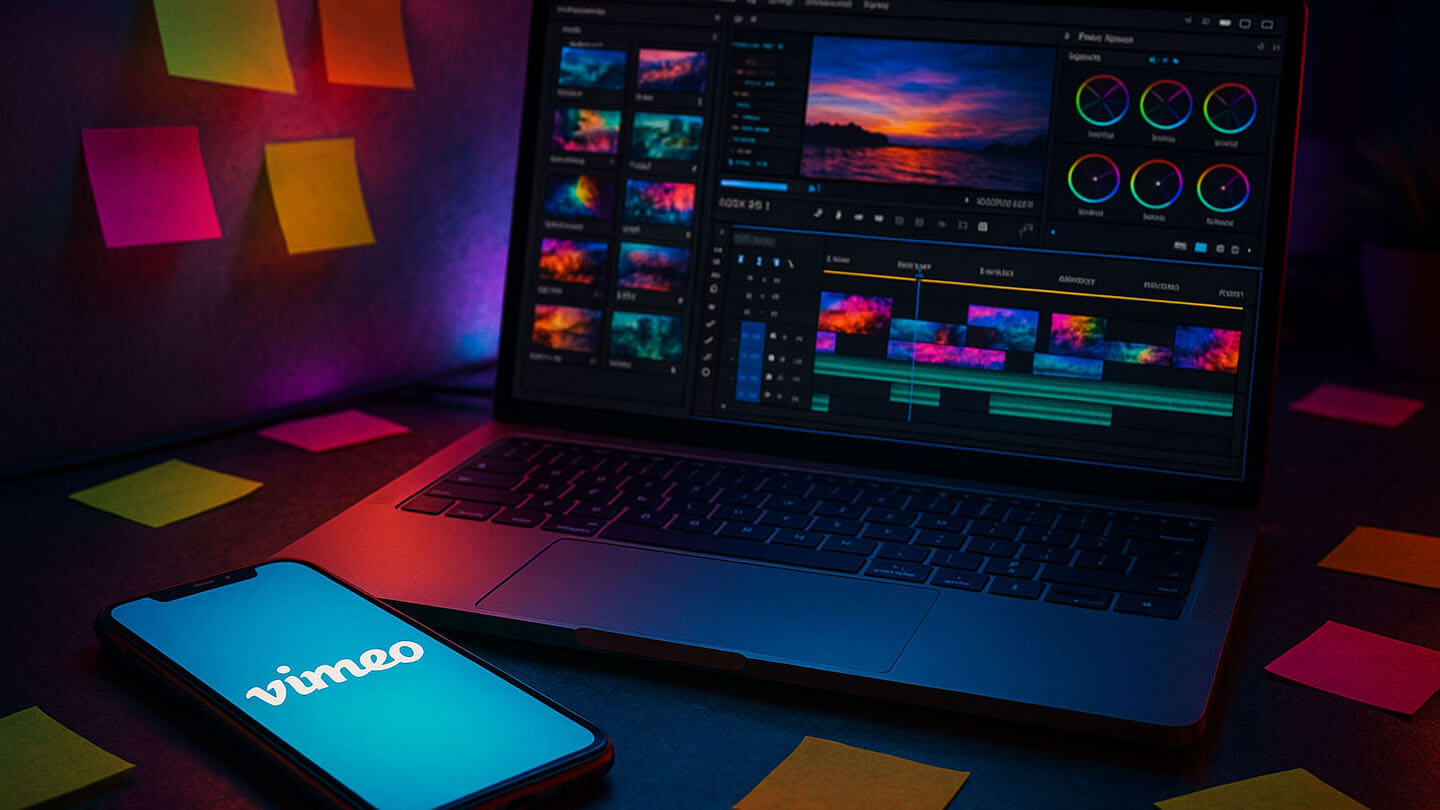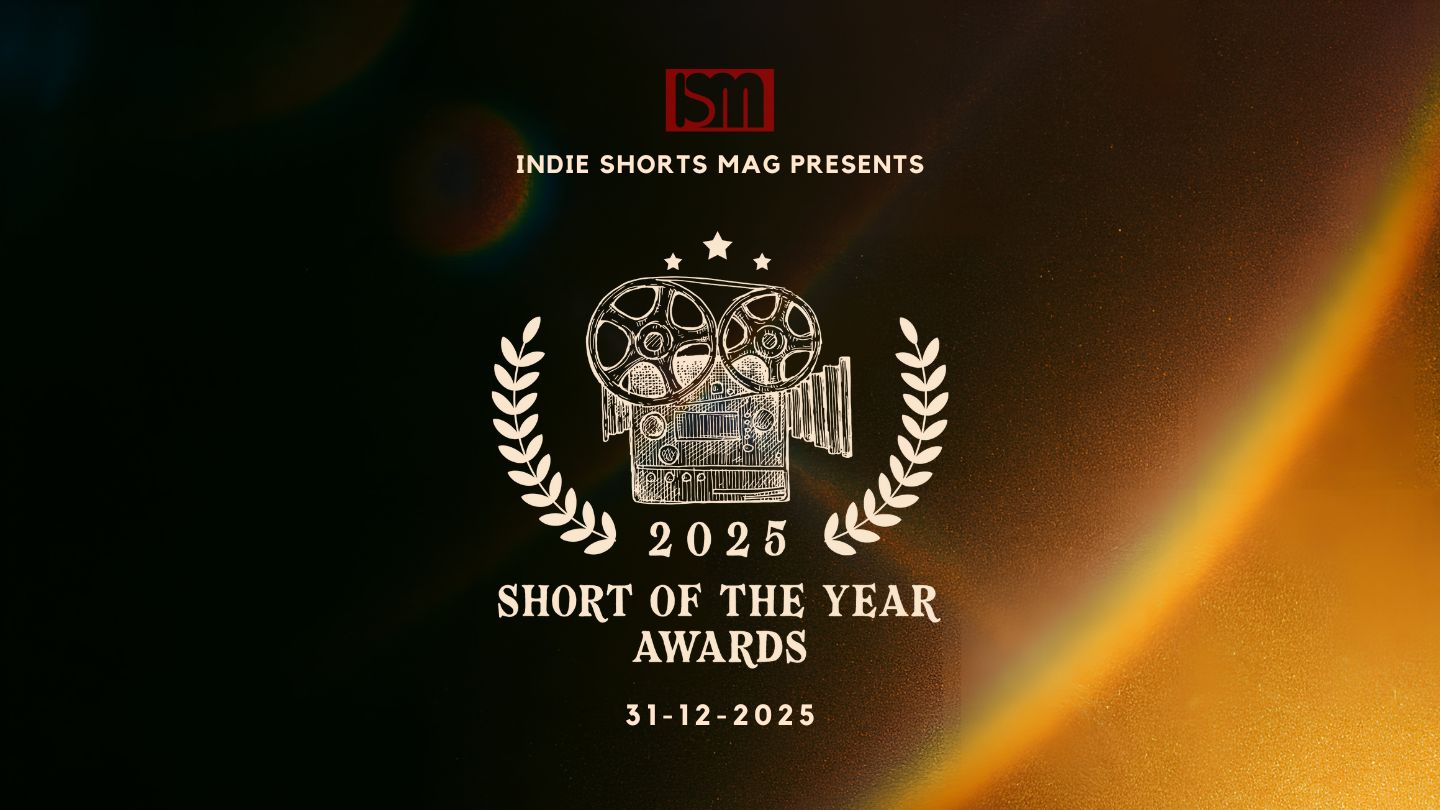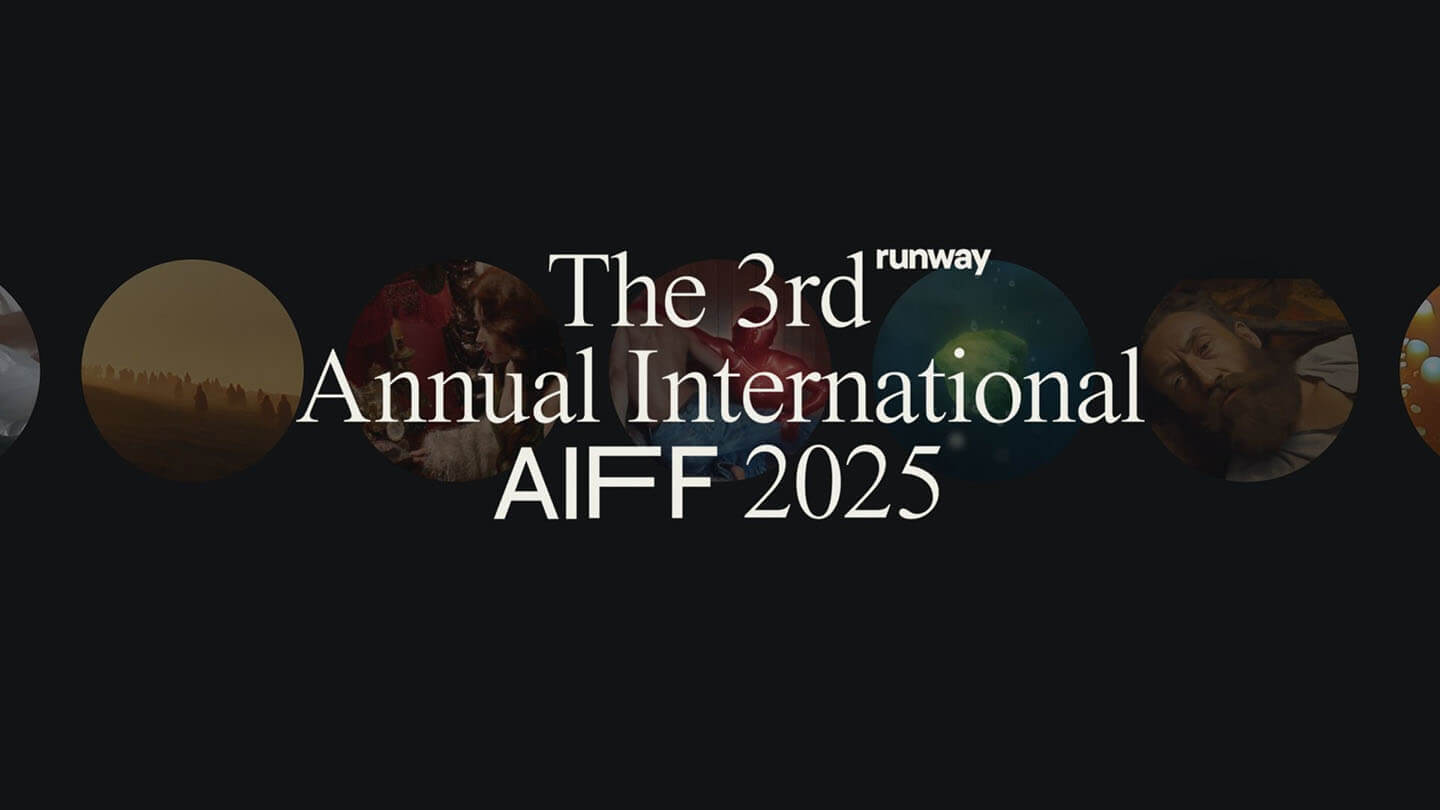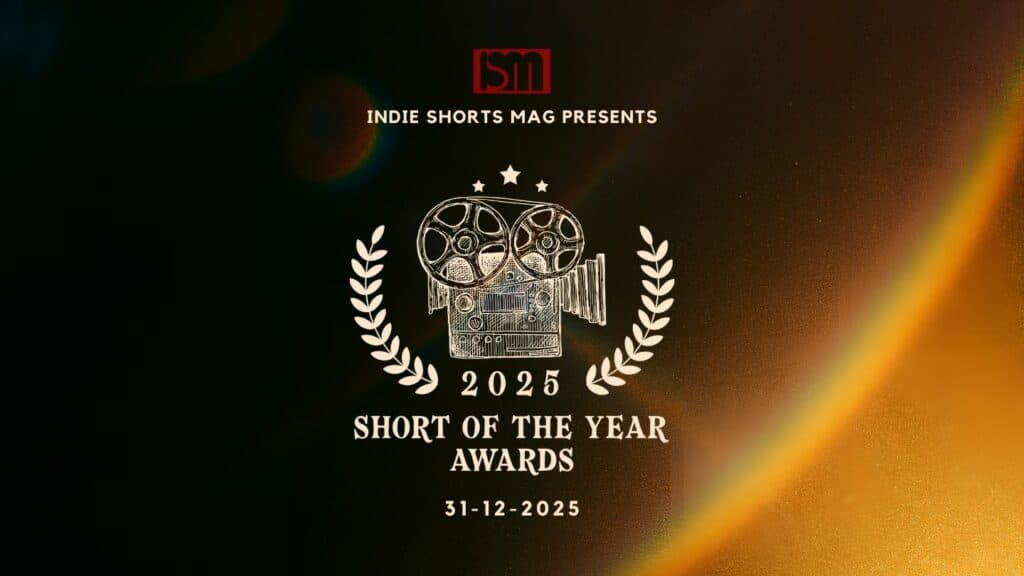Submitting your short film to festivals is a competitive but rewarding process. With top festivals accepting only 1% of submissions, careful planning is essential. Here’s a quick breakdown:
- Budget Wisely: Submissions cost $35–$85+ per entry. Allocate 3–5% of your film’s budget for this.
- Use Platforms Like FilmFreeway: Simplify submissions to over 12,000 festivals, including 233 Oscar/BAFTA-accredited ones.
- Tailor Your Approach: Research festivals, target both large and small ones, and align your film with their themes.
- Perfect Your Submission Package: Include a high-quality screener, engaging synopsis, concise director’s statement, and polished marketing materials.
- Submit Early: Early bird deadlines save money and improve visibility.
Success depends on strategy, professionalism, and persistence. Plan, research, and execute carefully to maximize your chances.
How to get accepted at film festivals (full guide)
How to Choose the Right Film Festivals
Picking the right festivals for your short film isn’t just about casting a wide net – it’s about being smart and strategic. Daniel Sol, owner of HollyShorts Film Festival, puts it plainly:
"It’s important to be honest about what your film is and who it’s for."
This kind of self-awareness is key to making informed submission decisions. It helps you aim for festivals that truly align with your film’s strengths while keeping your budget intact.
Research Festival Requirements and Themes
Every festival has its own personality and programming goals, which shape the kinds of films they select. For example, Sundance celebrates independent spirit and fresh storytelling, Berlinale leans into films addressing human rights, and Rotterdam is all about experimental, boundary-pushing cinema.
To give yourself the best shot, take time to dig into each festival’s submission guidelines, deadlines, fees, and audience preferences. Look at what’s been programmed in past years to get a sense of the themes and genres they favor. If your film fits a specific niche, find festivals that consistently showcase similar work. Also, be mindful of premiere status requirements – some festivals only accept films that haven’t been screened elsewhere.
Target Both Major and Smaller Festivals
Once you’ve identified festivals that might be a good fit, it’s time to organize them by their reach and your chances. Nanor Vosgueritchian of the Brooklyn Film Festival notes:
"Glitzy festivals don’t always fit every film’s needs"
. And the numbers don’t lie: acceptance rates can be as low as 1% for top-tier festivals, while smaller events offer more approachable odds, with rates closer to 15%.
To stay grounded, group your targets into three categories: “reach,” “realistic,” and “safety”. For example:
- Reach festivals: Big names like Sundance, Cannes, or Tribeca, where competition is fierce but the payoff in exposure is huge.
- Realistic festivals: Well-regarded regional events that offer a solid chance of acceptance.
- Safety festivals: Smaller, local events with higher acceptance rates and valuable networking opportunities.
For first-time filmmakers, local festivals can be a great starting point. Ben Thompson, vice president of shorts programming at Tribeca, offers this perspective:
"I usually tell people to hope for one or two [acceptances] in 10 submissions… It sounds like a small number. But if you get into ShortShorts in Japan, a real bucket-list festival, and get rejected by the other nine… that’s still a big win"
.

Plan Your Budget and Deadlines
Submission fees can vary widely, from $25 for early entries to $150 or more for late submissions, especially at major festivals . A good rule of thumb is to allocate 3–5% of your total film budget for festival submissions. Early bird deadlines are not only cheaper but also give you a better shot at being noticed. For instance, the Austin Film Festival’s early bird deadline is March 25, while HollyShorts accepts submissions until June 2.
Don’t forget to account for travel costs if your film is accepted into multiple festivals, and set aside an emergency fund for unexpected expenses. Beth Barrett, artistic director of the Seattle International Film Festival, advises filmmakers to think ahead:
"Prioritize the festival you most want to premiere at, and then work through the calendar. This should not be an afterthought, but rather a part of the overall plan"
.
Finally, don’t hesitate to reach out to festival programmers before submitting. Diana Sanchez, former Senior Director of TIFF, encourages filmmakers to take this step:
"It’s important for filmmakers to not be shy about writing to programmers. That’s our job – to help navigate this world and find new voices"
.
How to Build a Strong Submission Package
Your submission package is your film’s first handshake with festival programmers. It includes a high-quality screener, a sharp synopsis, a concise director’s statement, and polished marketing materials. These elements are crucial for making a lasting impression and could be the deciding factor between a festival acceptance or rejection.
Prepare a High-Quality Film Screener
The technical quality of your screener is more important than you might think. Festival programmers often decide within the first few minutes whether a film makes the cut, especially for short films. Poor audio or visuals can sink your chances before your story even unfolds. To avoid this, invest in professional audio mixing – clean, balanced sound can elevate even a low-budget film. Similarly, ensure consistent color correction and sharp visuals to make your film look its best.
Pay close attention to file format requirements. Every festival has specific guidelines for video codecs, frame rates, resolutions, and audio formats. Failing to meet these can lead to disqualification before anyone even presses play. While H.264 MP4 files are widely accepted, always double-check the festival’s specifications.
Submitting your film via Vimeo can be a smart move. Vimeo ensures format consistency and allows you to update your cut without changing the submission link or password. Plus, submitting early often means lower fees and gives you extra time to refine your final version.
Write a Clear Synopsis and Director’s Statement
Your synopsis is your film’s elevator pitch – it should distill the essence of your story into just a few engaging sentences. Aim to hook the reader, hinting at the conflict and stakes without giving away spoilers. The director’s statement is your opportunity to share your creative vision and explain why this story matters to you. Keep both documents brief and impactful.
Tailoring these materials for each festival can make a big difference. A customized cover letter that explains why your film aligns with a specific festival’s programming shows you’ve done your research. Mentioning films they’ve featured in the past or themes they celebrate can underscore your genuine interest.
Once your synopsis and statement are polished, focus on creating cohesive marketing materials to round out your submission.
Create Professional Marketing Materials
Your marketing materials go beyond just a poster – they’re your film’s visual and professional calling card. Include cast and crew bios, high-quality stills that reflect your film’s tone, accolades or laurels from prior screenings, and, if possible, a trailer. High-quality stills are particularly important; they convey your film’s mood and production value instantly. Avoid generic behind-the-scenes shots and instead choose images that showcase your film’s style and quality.
A trailer can be a powerful promotional tool. Keep it under two minutes and focus on atmosphere and character to intrigue viewers without giving away too much.
Finally, include all the essential details about your film – genre, budget, cast, crew, equipment used, premiere status, and screening history. This level of detail shows festival programmers that you’re thorough and professional, increasing your chances of standing out.
How to Use Submission Platforms
Once your submission package is polished, the next step is to navigate online platforms effectively. These platforms simplify the process of connecting with festivals, but they require careful attention to detail. Here’s how to make the most of them.
Submit Through FilmFreeway
FilmFreeway is a hub for filmmakers, connecting millions of users to over 12,000 festivals, including 233 Academy and BAFTA-accredited events.
"FilmFreeway has established itself as the industry standard in festival submissions." – Adam Montgomery, Senior Manager Programming, Sundance Film Festival
Start by clicking "Browse Festivals" to explore the wide range of opportunities. Use the platform’s filters to refine your search based on genre, location, entry fees, and deadlines. This makes it easier to find festivals that match your film’s style and your budget.
When you spot a festival that interests you, click "Submit Now" to add it to your shopping cart. The cart system lets you bundle multiple submissions, helping you manage both your budget and timeline. Before finalizing your submission, double-check every detail to ensure accuracy.
FilmFreeway’s intuitive interface makes managing multiple submissions straightforward. You can save festivals for future consideration, compare their requirements, and keep track of your submission history – all in one place.
Verify Your Metadata and Uploads
Accuracy is critical when preparing your technical materials. Festival programmers deal with countless submissions, and even small technical errors can lead to disqualification. Pay close attention to your film’s metadata, which includes title descriptions, cast and crew details, tags, and availability windows.
Make sure your video file meets the required framerate, resolution, and bitrate. While ProRes 422 HQ is a common standard, some festivals accept H.264 MP4 files. Always check the specific requirements for each festival.
English-language text tracks, such as subtitles for the deaf and hard of hearing (SDH), are often mandatory. Even if your film has no dialogue, submitting precise metadata demonstrates professionalism.
Don’t forget about artwork. Platforms typically require poster-style images in ratios like 2×3, 3×4, and 16×9, with 4×3 often needed for TV shows. These visuals are often the first impression programmers have of your film, so ensure they meet the required specifications.
Lastly, complete all mandatory fields, including your synopsis and director information. A concise, engaging description of your film is essential, and missing these details can lead to automatic rejection. Accurate and thorough metadata enhances your submission and reflects your attention to detail.
Track Your Submissions and Deadlines
Once your files and metadata are ready, staying organized is key to managing your submissions. Use the platform’s dashboard tools alongside your own tracking system to avoid missing deadlines. Platforms like FilmFreeway provide dashboards that display the status of your submissions with progress bars and indicators, showing whether your entry is under review, accepted, or rejected.
To stay on top of deadlines, sync submission dates with your calendar app. Automated reminders can help you take advantage of early bird pricing and prioritize urgent submissions.
While it’s important to check your submission status regularly, avoid obsessively refreshing the dashboard. Festival decisions often take weeks or months. Instead, use the time to update your submission records and maintain clear notes for future reference.
For additional organization, consider using a spreadsheet to track details not captured by the platform. Include notes about each festival, networking contacts, and follow-up actions. This method not only keeps you organized but also helps you learn from each experience and build valuable connections over time.
sbb-itb-376fc17
How to Improve Your Acceptance Chances
Building on your well-prepared submission package and thoughtful platform management, these strategies can help boost your chances of getting accepted. To stand out from the crowd, it’s all about understanding what each festival values and presenting a polished, tailored entry.
Customize Each Submission
Take the time to research each festival’s history, mission, and the types of films they’ve celebrated in the past. This will give you a clear picture of their preferences and themes. Use this knowledge to craft submission materials that highlight how your film aligns with their focus.
A personalized cover letter can make all the difference. For instance, if you’re submitting to a festival that highlights social justice films, explain how your story addresses these themes. If you’ve submitted to the festival before or participated in any way, mention it to strengthen your connection and show your ongoing interest.
Finally, double-check that your submission meets all the festival’s technical and administrative requirements. Attention to detail here is key.
Follow All Guidelines and Requirements
Sticking to the rules might sound obvious, but it’s absolutely essential. Festival programmers won’t hesitate to disqualify entries that miss technical specifications or deadlines.
"If you look like a pro, festival programmers are more likely to treat you like a pro." – WyomingFilmFestival
Carefully review the submission guidelines. Make sure your file format, resolution, and metadata are exactly as requested. Many festivals won’t accept revised versions after submission, so ensure your final cut is truly ready to go before hitting submit.
Connect with Festival Organizers
Beyond submitting a strong entry, building relationships within the industry can significantly increase your chances – not just for acceptance but for future opportunities as well.
"Building relationships with film festivals is more than just submitting films and waiting for acceptance. It’s about creating a presence in the industry that extends beyond a single event." – WriteSeen
Take the time to connect with festival staff by attending screenings, panels, or other events. Introduce yourself in a respectful way and follow up to keep the relationship alive. Simple gestures like engaging with their social media or volunteering can also leave a positive impression.
"Networking at film festivals doesn’t have to be stressful. It’s all about connection, community, and conversation." – Kimberly Hoyos, Writer
Thoughtful networking, paired with a professional submission, shows you’re serious about your craft and your place in the industry.
Use Indie Shorts Mag for Extra Exposure
Indie Shorts Mag is more than just a platform for film reviews – it’s a valuable resource for filmmakers looking to amplify their visibility, refine their submissions, and gain credibility in the competitive festival circuit.
Let’s break down how Indie Shorts Mag can help you take your film to the next level.
Submit Films for Indie Shorts Mag Reviews
Getting your short film reviewed by Indie Shorts Mag can be a game-changer. Since 2015, the platform has reviewed close to 1,000 films, creating a supportive community of over 10,000 members. A review here doesn’t just provide feedback; it can generate buzz and open doors to new opportunities.
The review process focuses on five critical areas: direction, cinematography, editing, screenplay, and music. This detailed analysis offers insight into how your film might be received by both festival programmers and audiences. As Dean Houlihan, director of From Black Into Beauty, shared:
"Thanks so much I’m really pleased with the review for From Black Into Beauty. It was really refreshing to hear how your team analyzed it and really understood what my film was trying to convey."
Indie Shorts Mag offers various review packages to suit different budgets and timelines:
| Package | Price | Delivery Time |
|---|---|---|
| Free | $0 | 8–12+ months |
| Lite | $39.99 | 6–8 months |
| Express | $59.99 | 4–6 months |
| Ultra | $99.99 | 2–4 months |
| Ultimate | $149.99 | 1–2 weeks |
For the latest prices, check the short film review submission page.
A published review from Indie Shorts Mag can give your festival submission an edge. Including the review in your cover letter not only adds credibility but can also generate early publicity for your film. Filmmaker Stella highlighted the impact of this exposure:
"Indie Shorts Mag has been invaluable in my journey as a first-time female filmmaker! Their coverage helped us immensely in gaining traction and in getting on bigger festivals’ radars, which can prove very challenging when you are new to the scene and without any ‘names’ in your movie."
Beyond reviews, Indie Shorts Mag offers additional tools to help you polish your submissions and maximize your film’s potential.
Access Free Tools and Tutorials
Crafting a standout submission can be daunting, but Indie Shorts Mag provides free resources to make it easier. Their cover letter generator helps you create professional, customized cover letters, while their tutorials cover essential pre-production and post-production techniques. Whether you’re refining your current project or preparing for your next one, these practical guides are designed to meet the standards that festival programmers are looking for.
Stay Updated with Festival News
The film festival landscape is constantly evolving, and staying informed is key to successful submissions. Indie Shorts Mag keeps you updated with the latest festival news, including new opportunities, deadline changes, and shifts in industry trends. Their coverage also includes insights from festival organizers, giving you a better understanding of programming preferences and helping you choose festivals that align with your film’s themes.
Additionally, Indie Shorts Mag’s active social media presence offers ongoing exposure opportunities. By engaging with their content and community, you can expand your network and keep your projects visible in the independent film scene.
Regularly checking their festival updates ensures you won’t miss important deadlines or the chance to submit to emerging festivals that might be the perfect fit for your work.
Conclusion: Key Points for Successful Submissions
Getting your short film accepted into festivals takes careful planning and smart choices. Filmmakers who succeed know that every detail counts, from picking the right festivals to presenting a polished submission package.
Choosing the right festivals is the cornerstone of your strategy. Acceptance rates can vary widely, so it’s important to research past winners, understand programming trends, and create a plan that balances high-profile festivals with smaller, regional events where your film might have a stronger shot.
Your submission package acts as your film’s introduction. A well-written synopsis, a thoughtful director’s statement, and a high-quality screener can make a big difference. Festival programmers look for films that evoke strong emotions and leave a lasting impression. Your materials should clearly show how your film achieves this.
Timing and precision also play a big role. Submitting early can reduce costs and maximize visibility, while following technical requirements ensures your film runs smoothly. Simple issues like poor audio can lead to immediate rejection.
The numbers back this up: filmmakers who align their projects with a festival’s history and mission see better acceptance rates and more industry opportunities. Careful research and tailored submissions lead to stronger results.
Building connections within the festival world can also improve your chances. Diana Sanchez, former Senior Director at TIFF, advises:
"It’s important for filmmakers to not be shy about writing to programmers. That’s our job – to help navigate this world and find new voices".
These relationships, combined with thorough preparation, can significantly enhance your prospects.
Patience and persistence are key to navigating the festival circuit. Even acclaimed films like Stutterer, which went on to win an Academy Award, faced early rejections before finding success. This highlights the importance of learning and improving as you go.
Finally, with submission fees ranging from $20 to $120 per entry, managing your budget wisely is crucial. Instead of submitting to dozens of festivals, focus on 15–20 carefully selected ones. A targeted approach will always outperform a scattershot strategy.
FAQs
How can I choose the best film festivals for my short film to increase its chances of acceptance?
To find the right film festivals for your short film, start by narrowing down festivals that align with your film’s genre or themes. For example, if your short is a horror piece or a documentary, seek out festivals that cater specifically to those categories. This way, your film is more likely to connect with both the audience and the judges.
Next, focus on festivals that either specialize in short films or spotlight emerging filmmakers. These events often create a welcoming space for fresh talent to shine. It’s also a good idea to look into festivals with a track record of featuring films similar to yours, as this suggests your work might align well with their programming style.
Lastly, make sure to carefully read submission guidelines and keep an eye on deadlines. Ensuring your film meets all the requirements can make a big difference in boosting your chances of being selected. A little extra research can go a long way in finding the perfect fit for your film.
What can I do to improve my chances of getting my short film accepted into a top film festival?
To improve your chances of securing a spot at a top film festival, start by identifying festivals that match your film’s genre, themes, and target audience. Timing is key – submitting your film early can give you an edge, as many festivals tend to favor early entries. Ensure your submission package shines by including a compelling synopsis, a polished press kit, and a professional-quality trailer. Also, double-check that your film complies with all technical and content requirements to avoid any risk of disqualification.
Building connections is another important factor. Attend film festivals, engage with organizers, and immerse yourself in the filmmaking community. Networking not only increases your visibility but also helps establish relationships that can catch the attention of festival programmers. A professional and thoughtful approach can set your submission apart and enhance your chances of success.
What should I include in my submission package to make my short film stand out to festival programmers?
To make your short film grab attention, your submission package needs to be thorough and professional. Here’s what to include:
- A concise and compelling synopsis that showcases your film’s story and what makes it stand out.
- A director’s statement explaining your creative vision and the inspiration behind the project.
- High-quality marketing materials, like a press kit featuring stills, cast and crew bios, and a polished trailer.
- A well-prepared screener that reflects your film’s quality and tone accurately.
Additionally, take the time to understand each festival’s theme and audience to ensure your film is a good fit. Stick to the submission guidelines – small errors can make a big difference. Strong storytelling, originality, and a polished presentation are essential to catch the eye of festival programmers.
Related Blog Posts
About the Author
Related Posts
No comments yet.
Got Something to add to this article?
Your email address will not be published. Required fields are marked *












